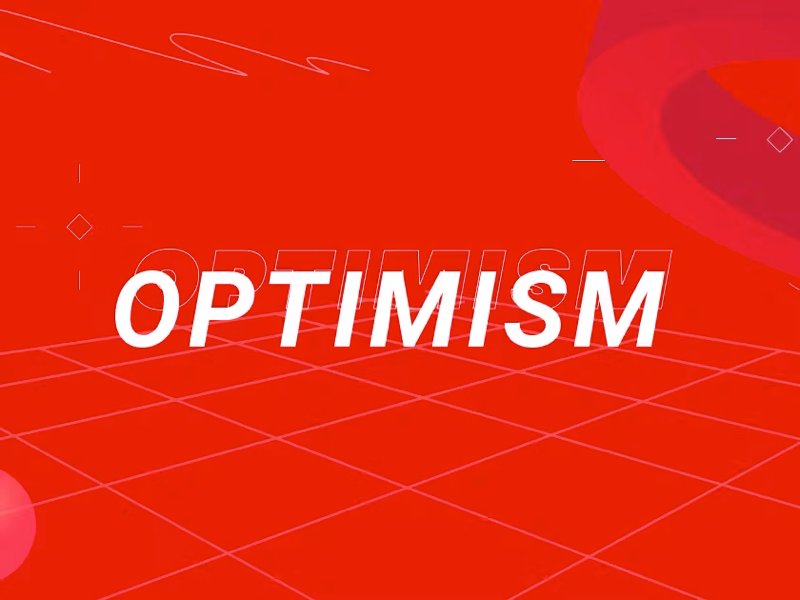What is Optimism: Ethereum Layer 2 Solutions
0 comments

Optimism, a layer-2 scaling solution built on the Ethereum network, has emerged as a promising answer to Ethereum's long-standing scalability challenges.
We are going to delve into the world of Optimism, exploring its functionality, benefits, and impact on the Ethereum ecosystem. Whether you're a developer, investor, or simply curious about blockchain technology, join us as we demystify Optimism and its role in revolutionizing the future of decentralized applications.

Ethereum’s Scalability Problem
To understand why Optimism was created, we must first talk about Ethereum, the second-largest blockchain platform, which has faced a persistent challenge when it comes to scalability.
As its popularity and usage have grown exponentially, the network has become increasingly congested, resulting in high gas fees and slower transaction processing times. This scalability problem has hindered the seamless and efficient operation of decentralized applications (dApps) and decentralized finance (DeFi) platforms built on Ethereum.
The issue arises from Ethereum's design as a decentralized and secure blockchain network. Its previous consensus mechanism, which relies on miners to validate transactions and add them to the blockchain, creates a bottleneck when it comes to scalability. The limited number of transactions that can be processed per second has led to delays and increased costs, making it less practical for everyday transactions and inhibiting the growth of the ecosystem.
And sadly, even with the move to Ethereum 2.0 which has a proof of stake consensus mechanism, scalability problems continue to plague the platform.
As Ethereum has gained widespread adoption and attracted a multitude of users and developers, the scalability problem has become more apparent. The surge in demand for decentralized applications, non-fungible tokens (NFTs), and other blockchain-based services has put a strain on the network's capacity, resulting in network congestion and elevated gas prices.
The need to address this scalability challenge has spurred the development of various layer-2 solutions, such as Optimism, that aim to provide scalability improvements without compromising the security and decentralization of the Ethereum network.
Related: Ethereum 2.0 Protocol Basics Explained
What is Optimism?
Optimism is a cutting-edge Layer 2 scaling solution designed to address the inherent scalability challenges of the Ethereum blockchain.
As Ethereum gained popularity, its limited transaction throughput and high fees became increasingly apparent. Optimism emerged as a potential game-changer by introducing an additional layer to the Ethereum network, allowing for quicker and more cost-effective transactions. By leveraging the power of "Optimistic Rollups," Optimism aims to enhance the user experience, making Ethereum more accessible and efficient.
Optimism is built to be a user-friendly and practical extension of the Ethereum ecosystem. The developers behind Optimism sought to create a solution that aligns with Ethereum's core philosophies while significantly improving transaction speed and cost-effectiveness.
By integrating seamlessly with Ethereum's existing infrastructure, Optimism enables developers and users to leverage the platform's strong security guarantees while enjoying faster and more affordable transactions. This approach ensures that the transition to Optimism requires minimal changes to existing contracts, programming languages, and tooling, making it an attractive option for Ethereum developers and enthusiasts.
Optimism's native token, also named Optimism (OP), plays a crucial role in the ecosystem. OP facilitates governance within the Optimism Collective decentralized autonomous organization (DAO) and provides holders with voting rights on network-related matters.
With institutional support from prominent firms like Andreessen Horowitz and Paradigm, Optimism has gained momentum and attracted significant attention in the blockchain industry. Its commitment to sustainability and retroactive public goods funding further demonstrates its long-term vision and dedication to building a thriving Ethereum ecosystem.
Related: Ethereum Layer Two Solutions: Temporary Salvation?

How Optimism Works to Solve the Scaling Problem
Optimism tackles Ethereum's scaling problem by leveraging a technology known as Optimistic Rollups. At its core, Optimistic Rollups aim to increase the scalability of Ethereum by bundling multiple transactions into a single compressed transaction. This approach significantly reduces the computational burden and costs associated with processing individual transactions on the Ethereum network.
When a user initiates a transaction on the Optimism network, it is first verified and executed off-chain by the Optimism nodes. These nodes then aggregate the multiple transactions into a single "rollup" transaction, which is subsequently submitted to the Ethereum mainnet. This rollup transaction acts as a proof of the combined transactions' validity and is settled on the Ethereum blockchain, ensuring security and immutability.
One of the key features of Optimistic Rollups is their optimistic nature, which forms the foundation of their design philosophy. Rather than requiring each transaction to be validated on the Ethereum mainnet, Optimistic Rollups assume that the transactions are valid by default.
This assumption eliminates the need for expensive and time-consuming computations for each transaction, significantly enhancing the scalability of the network. However, this approach introduces a challenge period during which anyone can challenge the validity of a transaction, triggering a more detailed verification process. This challenge period provides an additional layer of security to ensure the integrity of the Optimistic Rollups and allows for any potential errors or fraudulent activities to be identified and corrected.
By implementing Optimistic Rollups, Optimism offers a promising solution to Ethereum's scalability problem. This approach enables Ethereum to process a higher volume of transactions while keeping costs and gas fees significantly lower compared to transactions executed directly on the Ethereum mainnet.
Developers and users can leverage the benefits of Optimism to build and interact with decentralized applications, participate in decentralized finance (DeFi), and engage in other Ethereum-based activities, all with improved scalability and affordability. The adoption of Optimism's scaling solution opens up new possibilities for Ethereum's growth and paves the way for wider blockchain adoption in various industries.
Final Thoughts on Optimism
As Ethereum continues to evolve and expand its capabilities, scaling solutions like Optimism play a crucial role in enabling the network to handle growing transaction volumes efficiently. With its optimistic approach and focus on simplicity, Optimism offers a path to increased scalability and affordability for Ethereum users and developers.
By leveraging the power of Optimistic Rollups, Optimism paves the way for wider adoption of decentralized applications, decentralized finance, and other Ethereum-based activities. As the blockchain industry continues to innovate and address scalability challenges, Optimism stands out as a promising solution that empowers Ethereum to reach new heights.
With its commitment to sustainability, compatibility, and seamless integration with existing Ethereum tooling, Optimism is poised to shape the future of blockchain technology and contribute to the mass adoption of decentralized systems.
You May Also Enjoy: Ethereum’s Cancun-Deneb Upgrade: Everything You Need to Know
This article was brought to you by the BitRocket Bitcoin Crash Game on MintDice. Originally posted to the MintDice Blog.
Play on MintDice the world's best Bitcoin Casino! Featuring Bitcoin Dice, Bitcoin Slots, Plinko Game, and Bit.Rocket a Bitcoin Crash game! Also look out for MintDice's Pyramid Bitcoin Investment Game and the PowerMint Bitcoin Lottery Jackpot!
MintDice also features a current Bitcoin News Today blog featuring cryptocurrency news and gambling news.
Comments